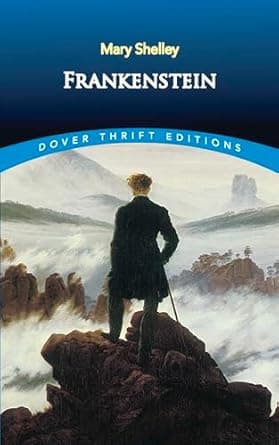
Book Stats
535
Upvotes
67
Downvotes
+468
Net Score
Frankenstein
by Mary Shelley
Description
The original science fiction horror novel—a profound meditation on scientific responsibility, creation, and what makes us human.
At just eighteen years old, Mary Shelley created one of literature's most enduring myths with the story of Victor Frankenstein and his monstrous creation. What began as a ghost story competition among friends became a revolutionary work that anticipated both the possibilities and dangers of scientific progress.
Victor Frankenstein is a brilliant young scientist obsessed with unlocking the secrets of life itself. Working in isolation, he succeeds in creating a living being from dead tissue—but immediately abandons his creation in horror at what he has done. The creature, left to fend for itself, becomes increasingly bitter and violent as it realizes that its appearance makes it an outcast from human society.
Shelley's novel operates on multiple levels simultaneously. It's a Gothic horror story about a monster stalking its creator, a science fiction tale about the dangers of unchecked scientific ambition, and a philosophical exploration of what defines humanity. The creature is both victim and villain—intelligent, articulate, and capable of great feeling, but driven to violence by its creator's abandonment and society's rejection.
The novel's structure is ingenious, nesting the creature's story within Victor's confession within the frame narrative of Arctic explorer Robert Walton. Each narrator offers a different perspective on the central questions: What responsibilities do creators have toward their creations? Can science proceed without moral considerations?
The novel's themes have only become more relevant with advances in genetic engineering, artificial intelligence, and other technologies that raise fundamental questions about the nature of life and consciousness. Frankenstein remains the foundational text for science fiction horror and a masterpiece of Gothic literature.